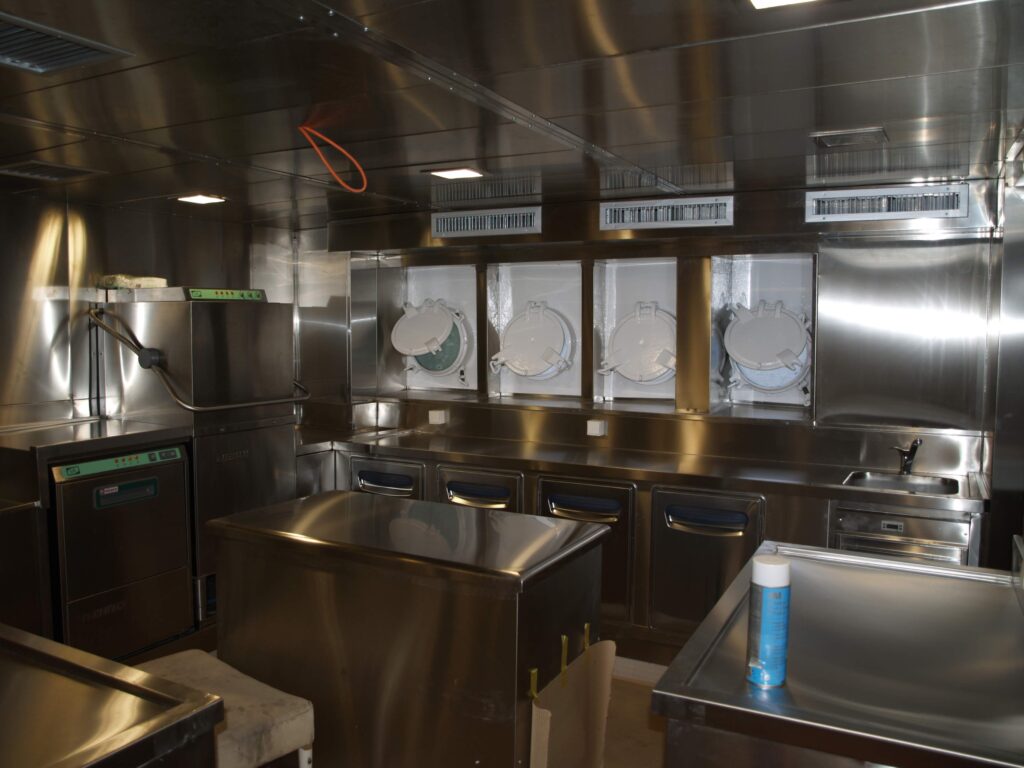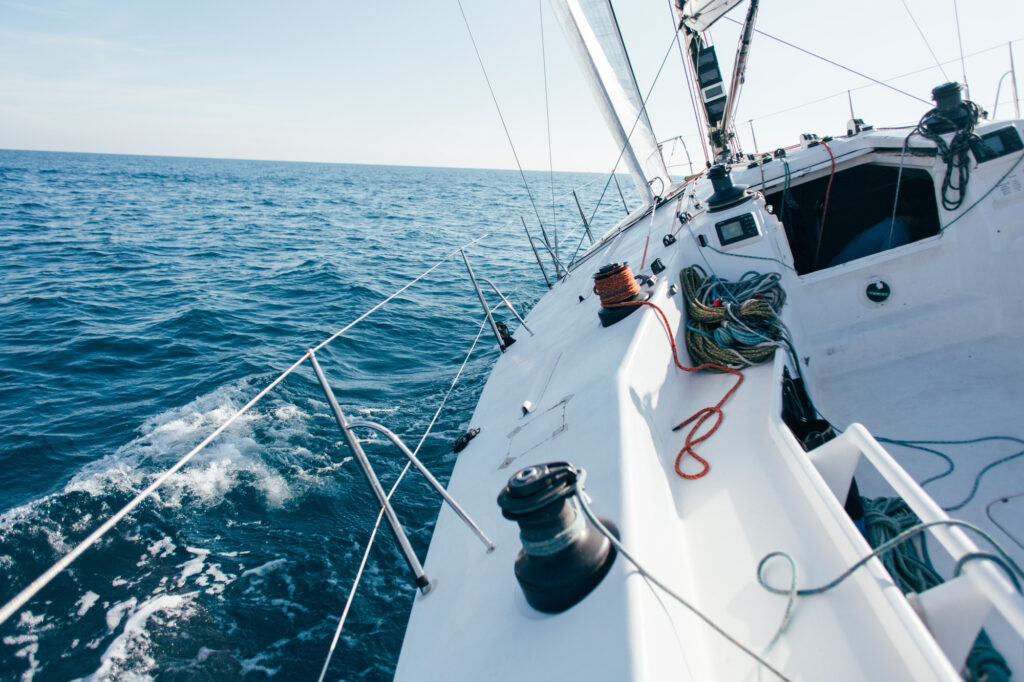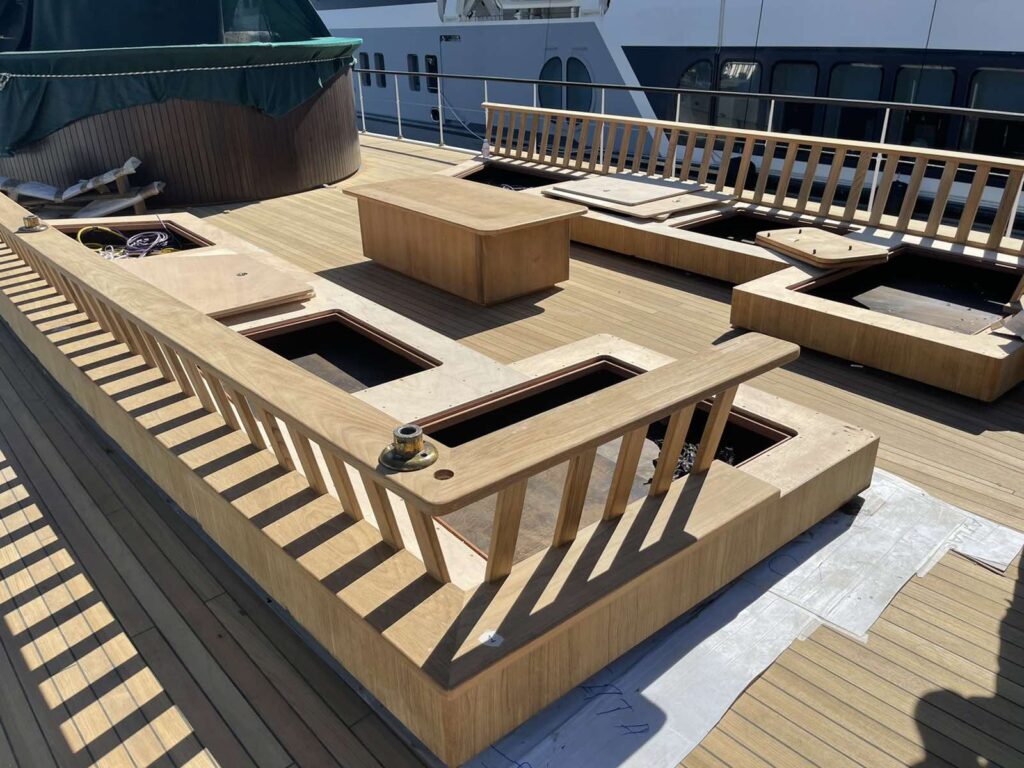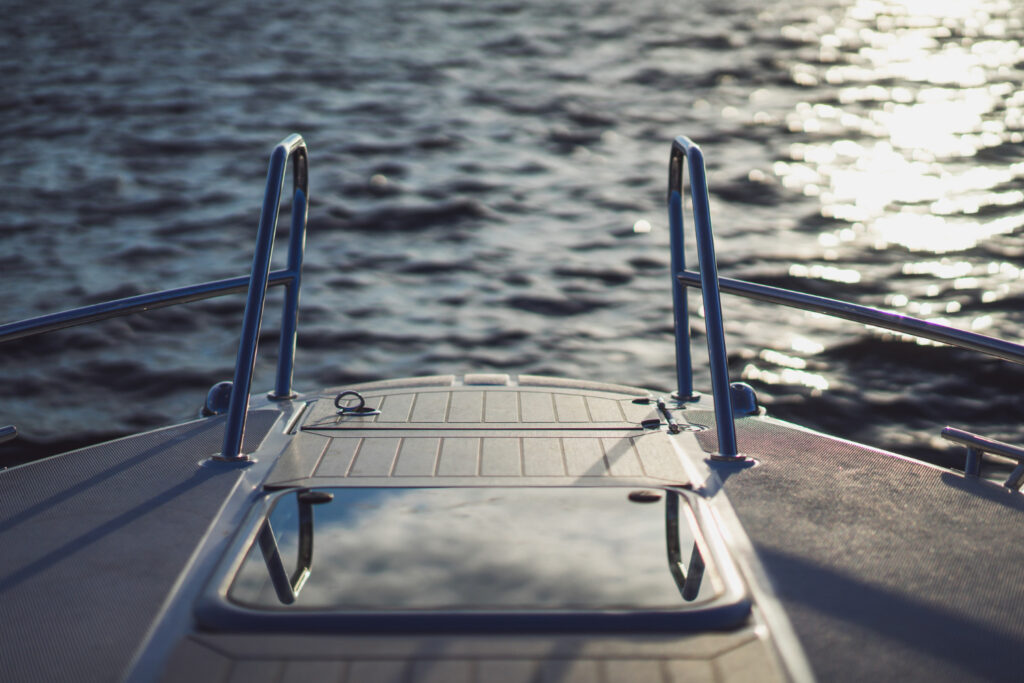Innovo yacht
Equipment
Yacht equipment
Categories
Yacht Equipment - Electronics
Navigating the Waters: A Comprehensive Marine Electronics Guide
Modern yachts often boast an array of built-in electronics, yet there’s always room for enhancements or upgrades, especially for older yachts.
Within this guide, we’ll outline the essential marine electronics that can elevate your on-water experience.
Explore the available options, learn the basics of integrating yacht electronics, and discover key maintenance tips to ensure longevity.
Designing your Yacht Electronics
Tips and Considerations Boat electronics serve crucial functions such as navigation assistance, communication facilitation, and centralizing control over electronic systems. However, just like any other component of your yacht, careful selection and maintenance are paramount.
Before diving into the world of marine electronics, here are five factors to ponder:
- Yacht Design: Tailor your electronics selection to suit your yacht’s purpose. Whether it’s a cruiser, fishing vessel, or sailboat, understanding your yacht’s primary function guides your choices. For instance, investing in a fish locator may not be pertinent if fishing isn’t a regular activity aboard your yacht.
- Consider Your Requirements: When selecting marine electronics for your byacht, it’s crucial to assess your specific needs.
- Navigation Needs: If your voyages take you far from shore, a chart plotter is indispensable. Alternatively, if fishing is your passion and you typically stay close to shore, investing in a fish locator might be more beneficial.
- System Upgrades: Given the rapid advancements in marine technology, consider whether you desire system upgrades. Opting for components compatible with the NMEA 2000 networking protocol ensures seamless integration and future-proofing.
- Input Preferences: Anticipate your input preferences based on your sailing conditions. In warmer climates where gloves aren’t necessary, a touchpad suffices. Conversely, if glove-wearing is anticipated, a keyboard is preferable as touchpads may not register input reliably.
- Destination Planning: Delve into your navigation requirements. Determine if your chosen navigation device includes maps for inland, coastal, and international waters. Additionally, explore combo devices that integrate chart plotters and fish locators for enhanced functionality.
Includ in your design the essential Yacht Electronics: Top 5 Picks
While some yacht electronics are optional luxuries, such as marine stereos for onboard audio entertainment, certain gadgets are indispensable for all boaters. Here’s a concise overview of the must-have boat electronics for your yacht:
VHF Radio: A VHF radio is a vital tool for maintaining communication with authorities during emergencies. Its reliability, even in areas with poor cell reception, and water-resistant design make it a trusted companion for every voyage.
Multifunction Displays (MFDs): Modern MFDs, resembling and functioning like smartphones, serve as centralized hubs for controlling various onboard electronics. They streamline operation and enhance efficiency for boats equipped with multiple electronic systems.
GPS Systems: Just as GPS navigation revolutionized land travel, it’s equally indispensable for navigating waterways. Whether standalone units, integrated with MFDs, or accessible via smartphone apps, GPS/chart plotters simplify marine navigation and enhance safety.
Fish Locators: Fish locators, available as standalone units or integrated within MFDs, employ sonar technology to quickly pinpoint fish locations. These devices, akin to depth sounders, are invaluable tools for anglers seeking fruitful fishing spots.
Engine Monitors: Engine monitors are essential for analyzing engine performance and ensuring functionality. While they can be integrated into MFDs, standalone units offer flexibility for monitoring engine health independently.
Equip your yacht with these essential boat electronics to enhance safety, navigation, and overall boating experience.
Maintaining and Winterizing Your Boat’s Electronics
Just like any equipment on your boat, marine electronics require proper maintenance for optimal performance. Regular cleaning and winterization are essential steps to ensure they function reliably, particularly before the cold season or extended periods of disuse.
Cleaning Your Gadgets:
- Power down the unit to safeguard settings.
- Lightly spritz the gadget with fresh water using a spray bottle to remove salt residue.
- Refer to the manufacturer’s cleaning guidelines; if unavailable, wipe components with a soft cloth dampened with a mixture of fresh water and mild soap. Alternatively, use a 50/50 solution of white vinegar or isopropyl alcohol and distilled water. Avoid ammonia or bleach-based cleaners to prevent yellowing of the screen’s coating.
- After cleaning, dry the unit thoroughly with a microfiber cloth, avoiding abrasive paper towels.
- Exercise caution not to apply excessive pressure during cleaning or drying, as screens on certain gadgets may be delicate.
- Apply a coat of boat wax to plastic radomes and GPS antennas for UV protection.
- When not in use, cover the screens of electronics to shield them from sun exposure and dust accumulation.
Winterizing Your Gadgets:
- Begin by cleaning the boat’s electronics following the aforementioned steps.
- Remove electronic tools from the vessel and store them indoors.
- If removal isn’t feasible, disconnect batteries or place a paper bag filled with rice or silica bead packets near the wiring harness to prevent corrosion during storage.
- For electronics left onboard, periodically power them off to minimize moisture buildup.
By adhering to these cleaning and winterization practices, you can prolong the lifespan and ensure the optimal performance of your boat’s electronics, even during periods of inactivity or harsh weather conditions.
InnovoYacht | Athens, Peraeus, Greece
Yacht Equipment - Distress Flares
Ensuring Safety on Your Yaching Adventure: Essential Equipment
Boat distress flares often slip our minds until they’re desperately needed. While basking in the joys of cruising the waterways on your yacht or indulging in a spot of fishing, it’s crucial to equip yourself with the necessary safety gear.
Your Boating Safety Equipment Checklist:
Regardless of your yatch’s size, a comprehensive emergency kit is essential and should include:
- Propelling device for engine failure emergencies.
- Anchor with a 15-meter rope for anchoring needs.
- Heaving line for water rescues.
- Fire extinguisher for fire emergencies.
- Bailer or hand pump for onboard flooding.
- Emergency kit featuring First Aid supplies, boat documentation, communication tools, navigation aids, extra batteries, water, snacks, weather gear, a knife, and spare clothing.
- Visual signaling devices such as flares and waterproof flashlights.
- Sound signaling devices like horns or whistles.
While some items are advisable for all yachts, others, like distress flares, are legally mandated. Having these onboard could be a lifesaver in an emergency.
Requirements for Boat Distress Flares:
Understanding the regulations surrounding distress flares is crucial:
- Flares are mandatory on oceans or water bodies where traveling over 1 nautical mile from shore is possible.
- Yatchs under 6 meters require 3 distress signals (plus smoke signals).
- Yatchs between 6 and 9 meters need 6 distress signals (plus smoke signals).
- For yachts between 9 and 12 meters, 12 distress signals are necessary (with half not being smoke signals).
- Yatchs exceeding 12 meters also require 12 distress signals (with half not being smoke signals).
- Distress signals should only be used in emergencies; any other use is illegal.
Types of Distress Flares:
Being well-versed in the different types of distress signals is vital for your safety:
- Type A: Rocket Parachute Flares, visible up to 20 nautical miles.
- Type B: Multi-Star Flares, visible up to 12 nautical miles.
- Type C: Handheld Flares, ideal for close-range signaling.
- Type D: Smoke Signals, suitable for daylight use only.
Storage and Maintenance:
Proper storage and maintenance ensure your distress signals are ready when needed:
- Store flares away from heat sources and flammable materials in a waterproof, easily accessible container.
- Label the container prominently for quick identification.
- Replace expired distress signals promptly.
InnovoYacht | Athens, Peraeus, Greece





